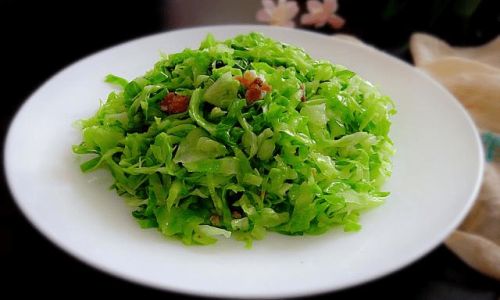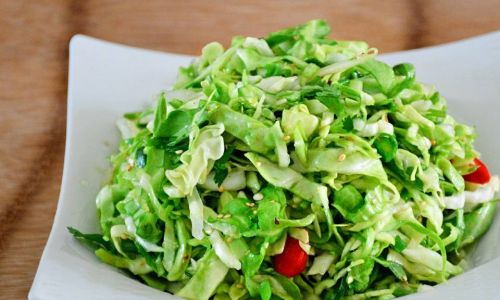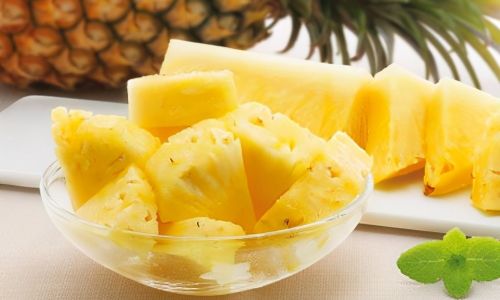Table of content
- Retaining Nutrients Through Raw Consumption
- Probiotic Potential: Fermented Raw Cabbage
- Bacterial Contamination
- Digestive Issues
- Selecting and Storing Cabbage
- Slicing Methods
- Marinating for Flavor
- European Traditions
- Asian Cuisine
- American and Latin American Dishes
- Classic Coleslaw with a Twist
- Quick-Pickled Red Cabbage
- Cabbage and Apple Slaw
Can Cabbage Be Eaten Raw? Exploring the Nutritional Benefits, Safety, and Culinary Versatility of This Cruciferous Vegetable
Cabbage, a leafy green or purple vegetable belonging to the Brassica oleracea family, has been a dietary staple across cultures for centuries. Known for its crunchy texture and mild, slightly peppery flavor, it is a common ingredient in salads, slaws, and fermented dishes. However, a recurring question among health-conscious individuals and home cooks alike is: Can cabbage be eaten raw?** This article delves into the nutritional advantages of consuming raw cabbage, potential safety concerns, and creative ways to incorporate it into meals. By examining scientific research, culinary traditions, and food safety guidelines, we aim to provide a comprehensive answer to this query.
Cabbage is often celebrated as a low-calorie, nutrient-dense vegetable. A single cup (89 grams) of raw green cabbage contains approximately:
- 22 calories
- 5 grams of carbohydrates
- 2 grams of fiber
- 1 gram of protein
- 85% of the Daily Value (DV) for vitamin K
- 54% of the DV for vitamin C
- 10% of the DV for folate
- Smaller amounts of vitamins B6, calcium, and potassium
These nutrients contribute to bone health, immune function, and cellular repair. However, the way cabbage is prepared—raw versus cooked—can influence its nutritional profile.
Retaining Nutrients Through Raw Consumption
Cooking cabbage, whether through boiling, steaming, or sautéing, can alter its nutrient content. For example:
- Vitamin C: This heat-sensitive vitamin degrades when exposed to high temperatures. Raw cabbage retains more vitamin C than cooked varieties.
- Glucosinolates: These sulfur-containing compounds, linked to anti-inflammatory and cancer-preventive effects, may diminish with prolonged cooking.
- Fiber: While cooking softens cabbage’s fibrous structure, raw consumption preserves its insoluble fiber, aiding digestion and promoting gut health.
A 2018 study published in the Journal of Food Science and Technology highlighted that raw cabbage retains higher levels of antioxidants and polyphenols compared to its cooked counterparts. These compounds combat oxidative stress, reducing the risk of chronic diseases like heart disease and diabetes.

Probiotic Potential: Fermented Raw Cabbage
Fermentation, a traditional preservation method, transforms raw cabbage into probiotic-rich foods like sauerkraut and kimchi. During fermentation, beneficial bacteria (e.g., Lactobacillus) break down cabbage’s natural sugars, producing lactic acid. This process enhances:
- Digestibility: Fermented cabbage is easier to tolerate for those with sensitive stomachs.
- Nutrient Bioavailability: Fermentation increases the absorption of minerals like iron and zinc.
- Gut Health: The probiotics in fermented cabbage support a balanced microbiome.
While fermentation involves raw cabbage, it is important to note that store-bought varieties may undergo pasteurization, which kills live bacteria. Opting for unpasteurized, refrigerated products ensures probiotic benefits.
Safety Concerns: Risks of Eating Raw Cabbage
Despite its nutritional merits, raw cabbage carries potential risks, primarily related to foodborne pathogens and digestive discomfort.
Bacterial Contamination
Cabbage grows close to the soil, making it susceptible to contamination by bacteria like Escherichia coli (E. coli), Salmonella, and Listeria monocytogenes. These pathogens can thrive on the vegetable’s outer leaves or within its layers. A 2020 report by the Centers for Disease Control and Prevention (CDC) linked raw cabbage to several outbreaks of foodborne illness, underscoring the importance of proper handling.
Mitigation Strategies:
- Washing Thoroughly: Rinse cabbage under cool, running water, gently scrubbing the outer leaves. Avoid soap, as it may leave residues.
- Removing Outer Leaves: Discard the outermost layers, as they are more likely to harbor contaminants.
- Avoiding Cross-Contamination: Use separate cutting boards and utensils for raw cabbage and other ingredients.
Digestive Issues
Raw cabbage contains raffinose, a complex sugar that the human body struggles to digest. Undigested raffinose ferments in the gut, producing gas and causing bloating or discomfort, particularly in individuals with irritable bowel syndrome (IBS).
Tips for Sensitive Consumers:

- Start Small: Introduce raw cabbage gradually to allow the gut to adjust.
- Cook Lightly: Briefly steaming or sautéing cabbage reduces raffinose content while retaining some nutrients.
- Pair with Digestive Aids: Combine cabbage with ginger or fermented foods like yogurt to ease digestion.
Preparing Raw Cabbage: Techniques and Tips
The key to enjoying raw cabbage lies in its preparation. Proper slicing, marinating, and seasoning can transform its crunch into a culinary asset.
Selecting and Storing Cabbage
- Choose Fresh Heads: Look for firm, heavy cabbages with crisp, vibrant leaves. Avoid specimens with wilted or discolored outer layers.
- Storage: Store whole cabbage in the refrigerator’s crisper drawer for up to two weeks. Once cut, wrap the remaining portion tightly in plastic and use within a few days.
Slicing Methods
- Shredding: Use a mandoline or sharp knife to create thin, even strips for salads or slaws.
- Chopping: Dice cabbage into bite-sized pieces for stir-fries or grain bowls.
- Ribboning: Peel leaves individually and slice them into wide ribbons for wraps or garnishes.
Marinating for Flavor
Raw cabbage’s mild flavor makes it an ideal canvas for marinades. Toss shredded cabbage with:
- Vinegar-Based Dressings: Apple cider vinegar or rice vinegar adds acidity.
- Oils: Olive oil or sesame oil enhance richness.
- Aromatics: Minced garlic, ginger, or fresh herbs like cilantro or mint.
Marinating for 30 minutes to an hour softens the cabbage’s texture and mellows its sharpness.
Cultural Perspectives on Raw Cabbage
Raw cabbage features prominently in global cuisines, reflecting its adaptability and nutritional appeal.
European Traditions
- Coleslaw: Originating in the Netherlands, this dish combines shredded cabbage, carrots, and mayonnaise-based dressing. Modern variations incorporate yogurt or vinegar for a lighter touch.
- Sauerkraut: Finely shredded raw cabbage fermented with salt, sauerkraut is a Germanic staple enjoyed with sausages or as a condiment.
Asian Cuisine
- Kimchi: A Korean staple, kimchi blends raw napa cabbage with chili paste, garlic, and fish sauce. Fermented for days to weeks, it offers a spicy, umami-rich flavor.
- Gỏi Cuốn: Vietnamese spring rolls wrap raw cabbage, herbs, and shrimp in rice paper for a refreshing appetizer.
American and Latin American Dishes
- Taco Toppings: Shredded cabbage adds crunch to tacos, tostadas, and burritos.
- Ensalada de Repollo: A Mexican cabbage salad dressed with lime juice, cilantro, and chili powder.
Creative Recipes Featuring Raw Cabbage
Classic Coleslaw with a Twist
Ingredients:
- 4 cups shredded green cabbage
- 1 cup grated carrots
- 1/4 cup mayonnaise (or Greek yogurt for a lighter version)
- 2 tbsp apple cider vinegar
- 1 tbsp honey or maple syrup
- 1 tsp Dijon mustard
- Salt and pepper to taste
- Optional add-ins: raisins, sliced almonds, or chopped parsley
Instructions:
- Combine cabbage and carrots in a large bowl.
- Whisk together mayonnaise, vinegar, honey, mustard, salt, and pepper.
- Toss the dressing with the cabbage mixture until evenly coated.
- Chill for 1 hour before serving.
Quick-Pickled Red Cabbage
Ingredients:

- 2 cups thinly sliced red cabbage
- 1/2 cup apple cider vinegar
- 1/2 cup water
- 1 tbsp sugar
- 1 tsp salt
- 1 garlic clove, sliced
- 1/2 tsp red pepper flakes (optional)
Instructions:
- Pack the cabbage into a jar.
- In a saucepan, combine vinegar, water, sugar, salt, garlic, and red pepper flakes. Bring to a boil, then simmer for 2 minutes.
- Pour the hot liquid over the cabbage, ensuring it’s fully submerged.
- Let cool, then refrigerate for at least 4 hours. These pickles last up to two weeks.
Cabbage and Apple Slaw
Ingredients:
- 3 cups shredded green cabbage
- 1 apple, julienned
- 1/4 cup chopped walnuts
- 2 tbsp lemon juice
- 2 tbsp olive oil
- 1 tsp honey
- 1/4 tsp cinnamon
Instructions:
- Toss cabbage and apple in a bowl.
- Whisk lemon juice, olive oil, honey, and cinnamon.
- Drizzle over the slaw and top with walnuts.
Conclusion: Embracing Raw Cabbage in Your Diet
The answer to whether cabbage can be eaten raw is a resounding yes—provided it is handled and prepared safely. Raw cabbage offers a wealth of nutrients, from vitamin C to gut-friendly fiber, and its versatility makes it a valuable addition to salads, slaws, and fermented dishes. By washing it thoroughly, storing it properly, and experimenting with flavors, you can enjoy raw cabbage’s crisp texture and health benefits while minimizing risks like bacterial contamination or digestive discomfort.
Cultural traditions and modern recipes alike highlight raw cabbage’s ability to adapt to diverse palates. Whether you’re tossing it into a zesty coleslaw, layering it into spring rolls, or fermenting it into probiotic-rich kimchi, this humble vegetable proves that simplicity and nutrition can coexist beautifully. So next time you spot a fresh head of cabbage at the market, don’t hesitate to bring it home—raw, crunchy, and full of potential.






0 comments